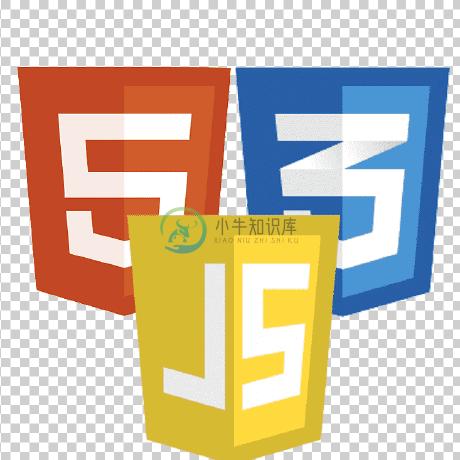graphql-hooks
Features
-
�� First-class hooks API -
⚖️ Tiny bundle: only 7.6kB (2.8 gzipped) -
�� Full SSR support: see graphql-hooks-ssr -
�� Plugin Caching: see graphql-hooks-memcache -
�� No more render props hell -
⏳ Handle loading and error states with ease
Install
npm install graphql-hooks
or
yarn add graphql-hooks
Support
- Latest 8 & 10 Node releases
- Browsers
> 1%, not dead
Consider polyfilling:
FormDataPromisefetch. NOTE: A custom implementation can also be provided instead of polyfilling, seeGraphQLClient
Quick Start
First you'll need to create a client and wrap your app with the provider:
import { GraphQLClient, ClientContext } from 'graphql-hooks'
const client = new GraphQLClient({
url: '/graphql'
})
function App() {
return (
<ClientContext.Provider value={client}>
{/* children */}
</ClientContext.Provider>
)
}
Now in your child components you can make use of useQuery
import { useQuery } from 'graphql-hooks'
const HOMEPAGE_QUERY = `query HomePage($limit: Int) {
users(limit: $limit) {
id
name
}
}`
function MyComponent() {
const { loading, error, data } = useQuery(HOMEPAGE_QUERY, {
variables: {
limit: 10
}
})
if (loading) return 'Loading...'
if (error) return 'Something Bad Happened'
return (
<ul>
{data.users.map(({ id, name }) => (
<li key={id}>{name}</li>
))}
</ul>
)
}
Why graphql-hooks?
The first thing you may ask when seeing graphql-hooks is "Why not use Apollo hooks?".It's the comparison most will make. In fact, there's an article comparing the two over on LogRocket.
We believe graphql-hooks is a great choice as a hooks-first GraphQL client due to its concise API and package size.
In terms of performance, this is more of a grey area as we have no official benchmarks yet.
If you need a client that offers middleware and advanced cache configuration, then apollo-hooks may work out to be a good choice for your project if bundle size is not an issue.
| Pros | Cons |
|---|---|
| Small in size | Middleware support |
| Concise API | Less "advanced" caching configuration |
| Quick to get up and running |
Table of Contents
- API
- Guides
API
GraphQLClient
Usage:
import { GraphQLClient } from 'graphql-hooks'
const client = new GraphQLClient(config)
config: Object containing configuration properties
url(Required): The url to your GraphQL serverssrMode: Boolean - set totruewhen using on the server for server-side rendering; defaults tofalseuseGETForQueries: Boolean - set totrueto use HTTP GET method for all queries; defaults to false. See HTTP Get Support for more infosubscriptionClient: An instance ofSubscriptionClientfrom subscriptions-transport-ws orClientfrom graphql-wscache(Required ifssrModeistrue, otherwise optional): Object with the following methods:cache.get(key)cache.set(key, data)cache.delete(key)cache.clear()cache.keys()getInitialState()- See graphql-hooks-memcache as a reference implementation
fetch(url, options): Fetch implementation - defaults to the globalfetchAPI. Check Request interceptors for more details how to managefetch.FormData: FormData implementation - defaults to the globalFormDataAPI. Polyfill this in a node.js environment. See file-uploads-nodejs for more info.fetchOptions: See MDN for info on what options can be passedheaders: Object, e.g.{ 'My-Header': 'hello' }logErrors: Boolean - defaults totrueonError({ operation, result }): Custom error handleroperation: Object withquery,variablesandoperationNameresult: Object containingdataanderrorobject that containsfetchError,httpErrorandgraphqlErrors
client methods
client.setHeader(key, value): Updatesclient.headersadding the new header to the existing headersclient.setHeaders(headers): Replacesclient.headersclient.removeHeader(key): Updatesclient.headersremoving the header if it existsclient.logErrorResult({ operation, result }): Default error logger; useful if you'd like to use it inside your customonErrorhandlerrequest(operation, options): Make a request to your GraphQL server; returning a Promiseoperation: Object withquery,variablesandoperationName
options.fetchOptionsOverrides: Object containing additional fetch options to be added to the default ones passed tonew GraphQLClient(config)
ClientContext
ClientContext is the result of React.createContext() - meaning it can be used directly with React's new context API:
Example:
import { ClientContext } from 'graphql-hooks'
function App() {
return (
<ClientContext.Provider value={client}>
{/* children can now consume the client context */}
</ClientContext.Provider>
)
}
To access the GraphQLClient instance, call React.useContext(ClientContext):
import React, { useContext } from 'react'
import { ClientContext } from 'graphql-hooks'
function MyComponent() {
const client = useContext(ClientContext)
}
useQuery
Usage:
const state = useQuery(query, [options])
Example:
import { useQuery } from 'graphql-hooks'
function MyComponent() {
const { loading, error, data } = useQuery(query)
if (loading) return 'Loading...'
if (error) return 'Something bad happened'
return <div>{data.thing}</div>
}
This is a custom hook that takes care of fetching your query and storing the result in the cache. It won't refetch the query unless query or options.variables changes.
query: Your GraphQL query as a plain stringoptions: Object with the following optional propertiesvariables: Object e.g.{ limit: 10 }operationName: If your query has multiple operations, pass the name of the operation you wish to execute.persisted: Boolean - defaults tofalse; Passtrueif your graphql server supportspersistedflag to serve persisted queries.useCache: Boolean - defaults totrue; cache the query resultskip: Boolean - defaults tofalse; do not execute the query if set totrueskipCache: Boolean - defaults tofalse; Iftrueit will by-pass the cache and fetch, but the result will then be cached for subsequent calls. Note therefetchfunction will do this automaticallyssr: Boolean - defaults totrue. Set tofalseif you wish to skip this query during SSRfetchOptionsOverrides: Object - Specific overrides for this query. See MDN for info on what options can be passedupdateData(previousData, data): Function - Custom handler for merging previous & new query results; return value will replacedatainuseQueryreturn valuepreviousData: Previous GraphQL query orupdateDataresultdata: New GraphQL query result
client: GraphQLClient - If a GraphQLClient is explicitly passed as an option, then it will be used instead of the client from theClientContext.
useQuery return value
const { loading, error, data, refetch, cacheHit } = useQuery(QUERY)
loading: Boolean -trueif the query is in flightdata: Object - the result of your GraphQL queryrefetch(options): Function - useful when refetching the same query after a mutation; NOTE this presetsskipCache=true& will bypass theoptions.updateDatafunction that was passed intouseQuery. You can pass a newupdateDataintorefetchif necessary.options: Object - options that will be merged into theoptionsthat were passed intouseQuery(see above).
cacheHit: Boolean -trueif the query result came from the cache, useful for debuggingerror: Object - Set if at least one of the following errors has occurred and contains:fetchError: Object - Set if an error occurred during thefetchcallhttpError: Object - Set if an error response was returned from the servergraphQLErrors: Array - Populated if any errors occurred whilst resolving the query
useManualQuery
Use this when you don't want a query to automatically be fetched, or wish to call a query programmatically.
Usage:
const [queryFn, state] = useManualQuery(query, [options])
Example:
import { useManualQuery } from 'graphql-hooks'
function MyComponent(props) {
const [fetchUser, { loading, error, data }] = useManualQuery(GET_USER_QUERY, {
variables: { id: props.userId }
})
return (
<div>
<button onClick={fetchUser}>Get User!</button>
{error && <div>Failed to fetch user<div>}
{loading && <div>Loading...</div>}
{data && <div>Hello ${data.user.name}</div>}
</div>
)
}
If you don't know certain options when declaring the useManualQuery you can also pass the same options to the query function itself when calling it:
import { useManualQuery } from 'graphql-hooks'
function MyComponent(props) {
const [fetchUser] = useManualQuery(GET_USER_QUERY)
const fetchUserThenSomething = async () => {
const user = await fetchUser({
variables: { id: props.userId }
})
return somethingElse()
}
return (
<div>
<button onClick={fetchUserThenSomething}>Get User!</button>
</div>
)
}
useMutation
Mutations unlike Queries are not cached.
Usage:
const [mutationFn, state, resetFn] = useMutation(mutation, [options])
Example:
import { useMutation } from 'graphql-hooks'
const UPDATE_USER_MUTATION = `mutation UpdateUser(id: String!, name: String!) {
updateUser(id: $id, name: $name) {
name
}
}`
function MyComponent({ id, name }) {
const [updateUser] = useMutation(UPDATE_USER_MUTATION)
const [newName, setNewName] = useState(name)
return (
<div>
<input
type="text"
value={newName}
onChange={e => setNewName(e.target.value)}
/>
<button
onClick={() => updateUser({ variables: { id, name: newName } })}
/>
</div>
)
}
The options object that can be passed either to useMutation(mutation, options) or mutationFn(options) can be set with the following properties:
variables: Object e.g.{ limit: 10 }operationName: If your query has multiple operations, pass the name of the operation you wish to execute.fetchOptionsOverrides: Object - Specific overrides for this query. See MDN for info on what options can be passedclient: GraphQLClient - If a GraphQLClient is explicitly passed as an option, then it will be used instead of the client from theClientContext.
In addition, there is an option to reset the current state before calling the mutation again, by calling resetFn(desiredState) where desiredState is optional and if passed, it will override the initial state with:
data: Object - the dataerror: Error - the errorloading: Boolean - true if it is still loadingcacheHit: Boolean - true if the result was cached
useSubscription
To use subscription you can use either subscriptions-transport-ws or graphql-ws
API
useSubscription(operation, callback)
operation: Object - The GraphQL operation the following properties:query: String (required) - the GraphQL queryvariables: Object (optional) - Any variables the query might needoperationName: String (optional) - If your query has multiple operations, you can choose which operation you want to call.client: GraphQLClient - If a GraphQLClient is explicitly passed as an option, then it will be used instead of the client from theClientContext.
callback: Function - This will be invoked when the subscription receives an event from your GraphQL server - it will receive an object with the typical GraphQL response of{ data: <your result>, errors?: [Error] }
Usage
First follow the quick start guide to create the client and povider. Then we need to update the config for our GraphQLClient passing in the subscriptionClient:
import { GraphQLClient } from 'graphql-hooks'
import { SubscriptionClient } from 'subscriptions-transport-ws'
// or
import { createClient } from 'graphql-ws'
const client = new GraphQLClient({
url: 'http://localhost:8000/graphql',
subscriptionClient: new SubscriptionClient('ws://localhost:8000/graphql', {
/* additional config options */
}),
// or
subscriptionClient: createClient({
url: 'ws://localhost:8000/graphql'
/* additional config options */
})
})
Next, within our React app, we can now make use of the useSubscription hook.
import React, { useState } from 'react'
import { useSubscription } from 'graphql-hooks'
const TOTAL_COUNT_SUBSCRIPTION = `
subscription TotalCount {
totalCount {
count
}
}
`
function TotalCountComponent() {
const [count, setCount] = useState(0)
const [error, setError] = useState(null)
useSubscription({ query: TOTAL_COUNT_SUBSCRIPTION }, ({ data, errors }) => {
if (errors && errors.length > 0) {
// handle your errors
setError(errors[0])
return
}
// all good, handle the gql result
setCount(data.totalCount.count)
})
if (error) {
return <span>An error occurred {error.message}</span>
}
return <div>Current count: {count}</div>
}
Working Example:
See our subscription example which has both the client and server code to integrate subscriptions into your application.
Guides
SSR
See graphql-hooks-ssr for an in depth guide.
Pagination
GraphQL Pagination can be implemented in various ways and it's down to the consumer to decide how to deal with the resulting data from paginated queries. Take the following query as an example of offset pagination:
export const allPostsQuery = `
query allPosts($first: Int!, $skip: Int!) {
allPosts(first: $first, skip: $skip) {
id
title
url
}
_allPostsMeta {
count
}
}
`
In this query, the $first variable is used to limit the number of posts that are returned and the $skip variable is used to determine the offset at which to start. We can use these variables to break up large payloads into smaller chunks, or "pages". We could then choose to display these chunks as distinct pages to the user, or use an infinite loading approach and append each new chunk to the existing list of posts.
Separate pages
Here is an example where we display the paginated queries on separate pages:
import { React, useState } from 'react'
import { useQuery } from 'graphql-hooks'
export default function PostList() {
// set a default offset of 0 to load the first page
const [skipCount, setSkipCount] = useState(0)
const { loading, error, data } = useQuery(allPostsQuery, {
variables: { skip: skipCount, first: 10 }
})
if (error) return <div>There was an error!</div>
if (loading && !data) return <div>Loading</div>
const { allPosts, _allPostsMeta } = data
const areMorePosts = allPosts.length < _allPostsMeta.count
return (
<section>
<ul>
{allPosts.map(post => (
<li key={post.id}>
<a href={post.url}>{post.title}</a>
</li>
))}
</ul>
<button
// reduce the offset by 10 to fetch the previous page
onClick={() => setSkipCount(skipCount - 10)}
disabled={skipCount === 0}
>
Previous page
</button>
<button
// increase the offset by 10 to fetch the next page
onClick={() => setSkipCount(skipCount + 10)}
disabled={!areMorePosts}
>
Next page
</button>
</section>
)
}
Infinite loading
Here is an example where we append each paginated query to the bottom of the current list:
import { React, useState } from 'react'
import { useQuery } from 'graphql-hooks'
// use options.updateData to append the new page of posts to our current list of posts
const updateData = (prevData, data) => ({
...data,
allPosts: [...prevData.allPosts, ...data.allPosts]
})
export default function PostList() {
const [skipCount, setSkipCount] = useState(0)
const { loading, error, data } = useQuery(allPostsQuery, {
variables: { skip: skipCount, first: 10 },
updateData
})
if (error) return <div>There was an error!</div>
if (loading && !data) return <div>Loading</div>
const { allPosts, _allPostsMeta } = data
const areMorePosts = allPosts.length < _allPostsMeta.count
return (
<section>
<ul>
{allPosts.map(post => (
<li key={post.id}>
<a href={post.url}>{post.title}</a>
</li>
))}
</ul>
{areMorePosts && (
<button
// set the offset to the current number of posts to fetch the next page
onClick={() => setSkipCount(allPosts.length)}
>
Show more
</button>
)}
</section>
)
}
File uploads
graphql-hooks complies with the GraphQL multipart request spec, allowing files to be used as query or mutation arguments. The same spec is also supported by popular GraphQL servers, including Apollo Server (see list of supported servers here).
If there are files to upload, the request's body will be a FormData instance conforming to the GraphQL multipart request spec.
import React, { useRef } from 'react'
import { useMutation } from 'graphql-hooks'
const uploadPostPictureMutation = `
mutation UploadPostPicture($picture: Upload!) {
uploadPostPicture(picture: $picture) {
id
pictureUrl
}
}
`
export default function PostForm() {
// File input is always uncontrolled in React.
// See: https://reactjs.org/docs/uncontrolled-components.html#the-file-input-tag.
const fileInputRef = useRef(null)
const [uploadPostPicture] = useMutation(uploadPostPictureMutation)
const handleSubmit = event => {
event.preventDefault()
uploadPostPicture({
variables: {
picture: fileInputRef.current.files[0]
}
})
}
return (
<form onSubmit={handleSubmit}>
<input accept="image/*" ref={fileInputRef} type="file" />
<button>Upload</button>
</form>
)
}
File uploads Node.js
const client = new GraphQLClient({
url: 'https://domain.com/graphql',
fetch: require('node-fetch'),
FormData: require('formdata-node')
})
const uploadPostPictureMutation = `
mutation UploadPostPicture($picture: Upload!) {
uploadPostPicture(picture: $picture) {
id
pictureUrl
}
}
`
const { data, error } = await client.request({
query: uploadPostPictureMutation,
variables: { picture: createReadStream('some-file.txt') }
})
HTTP Get support
Using GET for queries can be useful, especially when implementing any sort of HTTP caching strategy. There are two ways you can do this:
Per Query
const { loading, error, data } = useQuery(MY_QUERY, {
fetchOptionsOverrides: { method: 'GET' }
})
// same goes for useManualQuery
const [fetchSomething] = useManualQuery(MY_QUERY, {
fetchOptionsOverrides: { method: 'GET' }
})
For All Queries
When you create your client, set the useGETForQueries option as true:
const client = new GraphQLClient({
url: '/graphql',
useGETForQueries: true
})
Authentication
You can have access the to the graphql-hooks client context by using the React's new context API. ClientContext is actually the result of React.createContext().
Login example
import React, { useState, useContext } from 'react'
import { useMutation, ClientContext } from 'graphql-hooks'
const LOGIN_MUTATION = `mutation LoginUser (name: String!, password: String!) {
loginUser(name: $name, password: $password) {
token
}
}`
const Login = () => {
const client = useContext(ClientContext)
const [loginUserMutation] = useMutation(LOGIN_MUTATION)
const [userName, setUserName] = useState()
const [password, setPassword] = useState()
const handleLogin = async e => {
e.preventDefault()
const { data, error } = await loginUserMutation({
variables: { userName, password }
})
if (error) {
// your code to handle login error
} else {
const { token } = data.loginUser
client.setHeader('Authorization', `Bearer ${token}`)
// your code to handle token in browser and login redirection
}
}
return (
<form onSubmit={handleLogin}>
User Name:{' '}
<input
type={'text'}
value={userName}
onChange={e => setUserName(e.target.value)}
/>
PassWord: <input
type={'password'}
value={password}
onChange={e => setPassword(e.target.value)}
/>
<input type={'submit'} value={'Login'} />
</form>
)
}
export default Login
In the above example we use useContext() hook to get access to the graphql-hooks clientContext.Then we request the token from the server by performing the loginUser mutation.In the case the login is success we set the token to the client's header (client.setHeader), otherwise we need to handle the error.For more information about graphql-hooks clientContext refer to GraphQLClient section.
Fragments
Coming soon!
Migrating from Apollo
For a real life example, compare the next.js with-apollo vs with-graphql-hooks. We have feature parity and the main-*.js bundle is a whopping 93% smaller (7.9KB vs 116KB).
ApolloClient
➡️
GraphQLClient
- import { ApolloClient } from 'apollo-client'
- import { InMemoryCache } from 'apollo-cache-inmemory'
+ import { GraphQLClient } from 'graphql-hooks'
+ import memCache from 'graphql-hooks-memcache'
- const client = new ApolloClient({
- uri: '/graphql',
- cache: new InMemoryCache()
- })
+ const client = new GraphQLClient({
+ url: '/graphql',
+ cache: memCache()
+ })
A lot of the options you'd pass to ApolloClient are the same as GraphQLClient:
uri➡️ urlfetchOptionsonError- the function signature is slightly differentheadersfetchcache
ApolloProvider
➡️
ClientContext.Provider
- import { ApolloProvider } from 'react-apollo'
+ import { ClientContext } from 'graphql-hooks'
function App({ client }) {
return (
- <ApolloProvider client={client}>
+ <ClientContext.Provider value={client}>
{/* children */}
+ </ClientContext.Provider>
- </ApolloProvider>
)
}
Query Component
➡️
useQuery
- import { Query } from 'react-apollo'
- import gql from 'graphql-tag'
+ import { useQuery } from 'graphql-hooks'
function MyComponent() {
+ const { loading, error, data } = useQuery('...')
- return (
- <Query query={gql`...`}>
- {({ loading, error, data}) => {
if (loading) return 'Loading...'
if (error) return 'Error :('
return <div>{data}</div>
- }}
- </Query>
- )
}
Query Component Props
A lot of options can be carried over as-is, or have direct replacements:
query➡️ useQuery(query): Remove any usage ofgqland pass your queries as strings.variables➡️ useQuery(query, { variables })ssr➡️ useQuery(query, { ssr })- Fetch Policies: See #75 for more info
cache-first: This the default behaviour ofgraphql-hookscache-and-network: The refetch function provides this behaviour it will set loading: true, but the old data will be still set until the fetch resolves.network-only➡️ useQuery(QUERY, { skipCache: true })cache-only: Not supportedno-cache➡️ useQuery(QUERY, { useCache: false })
Not yet supported
errorPolicy: Any error will set theerrorto be truthy. See useQuery for more details.pollIntervalnotifyOnNetworkStatusChangeskiponCompleted: Similar ability if usinguseManualQueryonError: Similar ability if usinguseManualQuerypartialRefetch
Query Component Render Props
- <Query query={gql`...`}>
- {(props) => {}}
- </Query>
+ const state = useQuery(`...`)
props.loading➡️ const { loading } = useQuery('...')props.error➡️ const { error } = useQuery('...'): The error value fromuseQueryis Boolean the details of the error can be found in either:state.fetchErrorstate.httpErrorstate.graphQLErrors
props.refetch️➡️ const { refetch } = useQuery('...')props.updateData(prevResult, options)️➡️ state.updateData(prevResult, newResult)
Not yet supported
props.networkStatusprops.startPollingprops.stopPollingprops.subscribeToMore
Mutation Component
➡️
useMutation
- import { Mutation } from 'react-apollo'
- import gql from 'graphql-tag'
+ import { useMutation } from 'graphql-hooks'
function MyComponent() {
+ const [mutateFn, { loading, error, data }] = useMutation('...')
- return (
- <Mutation mutation={gql`...`}>
- {(mutateFn, { loading, error }) => {
if (error) return 'Error :('
return <button disabled={loading} onClick={() => mutateFn()}>Submit</button>
- }}
- </Mutation>
- )
}
Mutation Props
mutation➡️ useMutation(mutation)- no need to wrap it ingqlvariables➡️ ️useMutation(mutation, { variables })ormutateFn({ variables })ignoreResults➡️ ️️️const [mutateFn] = useMutation(mutation)onCompleted➡️ ️mutateFn().then(onCompleted)onError➡️ mutateFn().then(({ error }) => {...})
Not yet supported
update: Coming soon #52optimisticResponserefetchQueriesawaitRefetchQueriescontext
Mutation Component Render Props
- <Mutation mutation={gql`...`}>
- {(mutateFn, props) => {}}
- </Mutation>
+ const [mutateFn, state] = useMutation(`...`)
props.data➡️ const [mutateFn, { data }] = useMutation()props.loading➡️ const [mutateFn, { loading }] = useMutation()props.error➡️ const [mutateFn, { error }] = useMutation(): The the details of the error can be found in either:state.fetchErrorstate.httpErrorstate.graphQLErrors
client️➡️ ️const client = useContext(ClientContext)see ClientContext
Not yet supported
called
Other
Request interceptors
It is possible to provide a custom library to handle network requests. Having that there is more control on how to handle the requests. The following example shows how to supply axios HTTP client with interceptors. It can be handy in the situations where JWT token has expired, needs to be refreshed and request retried.
import axios from 'axios'
import { buildAxiosFetch } from '@lifeomic/axios-fetch'
import { GraphQLClient } from 'graphql-hooks'
const gqlAxios = axios.create()
gqlAxios.interceptors.response.use(
function (response) {
return response
},
function (error) {
// Handle expired JWT and refresh token
}
)
const client = new GraphQLClient({
url: '/graphql',
fetch: buildAxiosFetch(gqlAxios)
})
Contributors
Thanks goes to these wonderful people (emoji key):
This project follows the all-contributors specification. Contributions of any kind welcome!
-
前言 公司项目需要使用react,而函数式组件也是官方比较推荐的!!!所以学习hooks是很重要的。 一、什么是函数式组件? 纯函数组件有以下特点: 没有状态 没有生命周期 没有 this 因存在如上特点,使得纯函数组件只能做UI展示的功能, 涉及到状态的管理与切换就不得不用到类组件或者redux。 但因为简单的页面也是用类组件,同时要继承一个React实例,使得代码会显得很重。 以前我们可以使用
-
前言 刚刚写完后端的代码刷了下B站,发现有很多小伙伴还是觉得国外火的技术传到国内不一定回火,甚至可能会非常沉寂,我个人感觉,学习新的技术不一定目的性那么强,既然它能在国外大火至少说明它的内核很可能值得我们很多人研究好几个月甚至好几年的,抱着更高一层的思想去学习,很多东西我觉得自然而然会得到的. 你们应该知道是什么东西,手动狗头. 数据检查 React和apollo client,甚至graphql
-
High performance Next + React + GraphQL starter kit The purpose of this starter kit is not to be complete solution, but introduction for creating high performance websites with Next.js, React and Grap
-
Angular 2应用程序遍历整个流程集,或者从应用程序的启动到结束都有一个生命周期。 下图显示了Angular 2应用程序生命周期中的整个过程。 以下是每个生命周期钩子的描述。 ngOnChanges - 当数据绑定属性的值更改时,将调用此方法。 ngOnInit - 只要在Angular首次显示数据绑定属性后初始化指令/组件,就会调用此方法。 ngDoCheck - 用于检测并对Angular
-
常用 Hooks Hooks 是 Rax 1.0 新增的特性,它可以让函数组件(Function Component)使用状态和生命周期。Rax 在实现上遵循了 React Hooks 的标准。 Rax 转小程序链路目前支持的 Hooks 有以下几种: useState useEffect useReducer useContext useRef 关于以上 Hooks 的具体使用方式,可以参考这里
-
Cordova Hooks represent special scripts which could be added by application and plugin developers or even by your own build system to customize cordova commands. Hook scripts could be defined by addin
-
具备基本工程素养的同学都会注重编码规范,而代码风格检查(Code Linting,简称 Lint)是保障代码规范一致性的重要手段。 使用 Lint 会有什么好处呢?在我看来至少具有如下 3 点: 更少的 Bug 更高的开发效率,Lint 很容易发现低级的、显而易见的错误 更高的可读性 很多时候我们lint的校验是放在持续集成阶段,大概流程如下: 代码提交 --> 跑 CI 发现问题(远程) -->
-
介绍 Cordova Hooks represent special scripts which could be added by application and plugin developers or even by your own build system to customize cordova commands. Cordova hooks allow you to perform




























